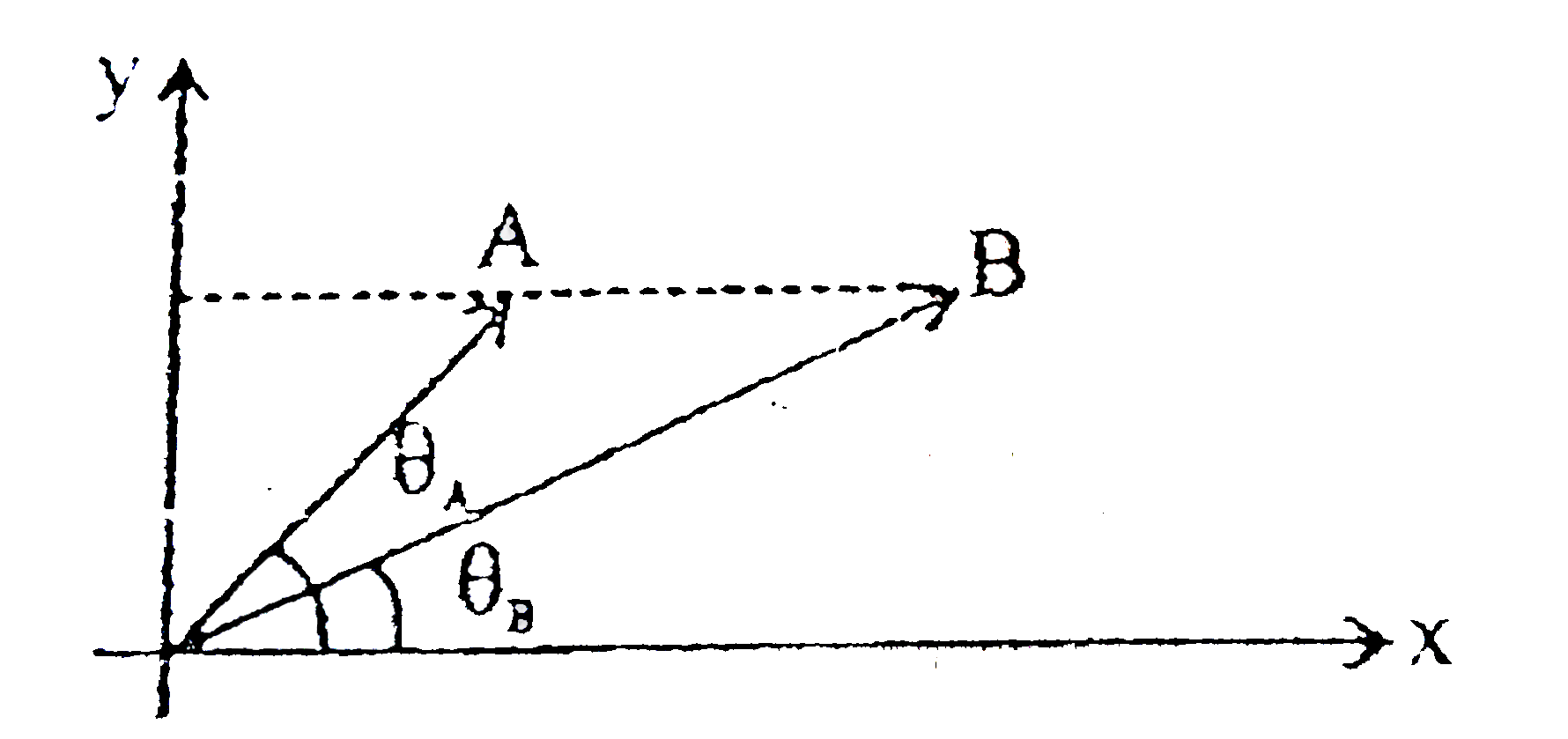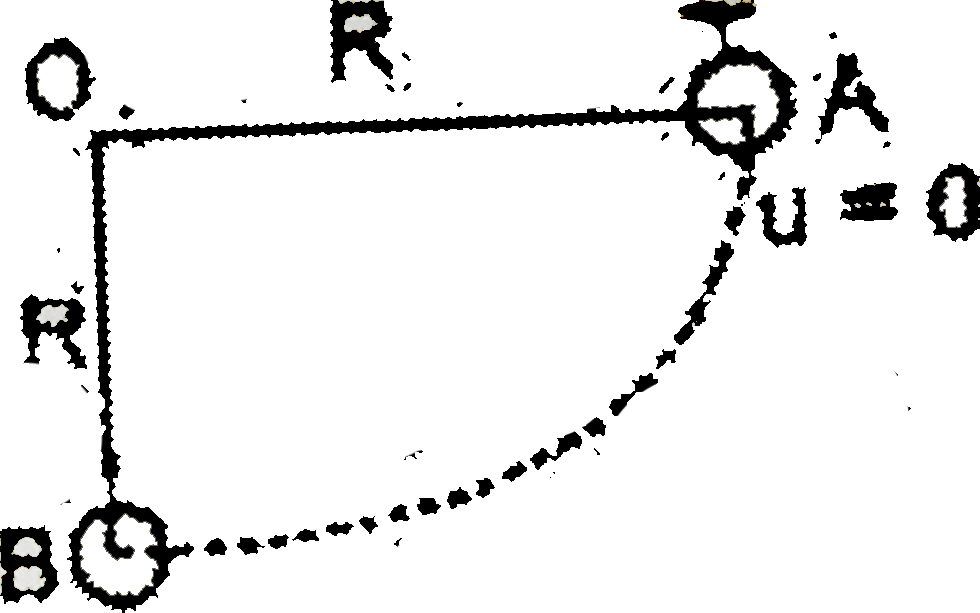A particle is in linear S.H.M. between two points A and B, 10 cm apart. Take the direction from A to B as the positive direction and give the signs of velocity, acceleration and force on the particle when it is.
(a) at the end (A) at the end B,
(c) at the mid point of AB going towards A,
(d) at 2 cm away from B going towards A,
(e) at 3 cm away from A goiing towards B, and
(f) at 4 cm away from A going towards A.

Refer to figure , where A and B represent the two extreme positions of a S.H.M. For velocity, the direction from A to B is taken to be positive. The acceleration and the force, along AP are taken as positive, and along BP are taken as negative.
(a) At the end A, the particle executing S.H.M.is momentarily at rest being its extreme position of motion. Therefore, its velocity is zero, acceleration is +ve because it is directed along AP. Force is also +ve since the force is directed alonog AP, i.e., +ive direction.
(b) At the end B, velocity is zero. Hee, acceleration and force are negative as they are directed along BP, i.e., along negative direction.
(c) At the mid point of AB going towards A, the particle is at its mean position P, with a tendency to move along PA, i.e., −ve direction. Hence velocity is −ve. Both, acceleration and force are zero.
(d) At 2 cm away from B going towards A, the particle is at Q, with a tendency to move along QP, which is negative direction. Therefore, velocity , acceleration and force, all are negative.
(e) At 3cm away from A going towards B, the particle is at R, with a tendency to move along RP, which is positive direction. Here, velocity, acceleration and force, all are positive.
(f) At 4 cm away from A going towards A, the particle is at S, with a tendency to move along SA,which is negative direction for velocity is negative but acceleration is directed towards mean positiion, i.e., along SP, hence +ve. Similarly, force is alos +ve.
Topper's Solved these Questions
- BOOK - PRADEEPCHAPTER - OSCILLATIONS AND WAVESEXERCISE - Additional Exercises6videos
OSCILLATIONS AND WAVES
- BOOK - PRADEEPCHAPTER - OSCILLATIONS AND WAVESEXERCISE - NCERT CHAPTER26videos
OSCILLATIONS AND WAVES
- BOOK - PRADEEPCHAPTER - OSCILLATIONS AND WAVESEXERCISE - Advanced Problems For Competitions20videos
OSCILLATIONS AND WAVES
- BOOK - PRADEEPCHAPTER - MATHEMATICAL TOOLSEXERCISE - Fill in the blanks5videos
MATHEMATICAL TOOLS
- BOOK - PRADEEPCHAPTER - PHYSICAL WORLD AND MEASUREMENTEXERCISE - Competiton Focus Jee Medical Entrance18videos
PHYSICAL WORLD AND MEASUREMENT
Similar Questions
For a particle undergoing SHM, when will be its
(a)velocity and displacement in the same direction
(b) velocity and acceleration in the same direction
(c ) displacement and acceleration in the same directionView SolutionThe position vector →r of a particle points along the positive direction of a z axis. If the torque on the particle is (a) zero, (b) in the negative direction of x, and ( c) in the negative direction of y, in what direction is the force causing the torque?
View Solution
Knowledge Check
- Question 1 - Select One or More
A particle is in linear simple harmonic motion between two points A and B, 10 cm apart (figure) . Take the direction from A to B as the +ve direction and choose the correct statements.
 AThe sign of velocity, acceleration and force on the particle when it is 3 cm away from A going towards B are positive.BThe sign of velocity of the particle at C going towards O is negative.CThe sign of velocity acceleration and force on the particle when it is 4 cm away from B going towards A are negative.DThe sign of acceleration and force on the particle when it is at point B is negative.
AThe sign of velocity, acceleration and force on the particle when it is 3 cm away from A going towards B are positive.BThe sign of velocity of the particle at C going towards O is negative.CThe sign of velocity acceleration and force on the particle when it is 4 cm away from B going towards A are negative.DThe sign of acceleration and force on the particle when it is at point B is negative. - Question 2 - Select One
A particle is in linear simple harmonic motion between two points. A and B, 10 cm apart (figure.) take direction from A to B as the positive direction and choose the correct statements.

AO= OB= 5cm
BC=8cmAThe sing of velocity, acceleration and force on the particle when it is 3 cm away from A going towards B are positiveBThe sign of velocity of the particle at C going towards B is negativeCThe sign of volocity, acceleration and force on the particle when it is 4 cm away form B going towards A are negativeDThe sign of acceleration and force on the particle when it is at points B is negative - Question 3 - Select One or More
A particle is in linear simple harmonic motion between two points A and B10cm apart (figure). Take the direction form A to B as positive direction and choose the correct statements.
AO=OB=5cm
BC=8cm
 AThe sign of velocity, acceleration and force on the particle when it is 3cm away from A going towards B are positiveBThe sign of velocity of the particle at C going towards B is negativeCThe sign of velocity, acceleration and force on the particle when it is 4cm away from B going towards A are negativeDThe sign of acceleration and force on the particle when it is at point B is negative
AThe sign of velocity, acceleration and force on the particle when it is 3cm away from A going towards B are positiveBThe sign of velocity of the particle at C going towards B is negativeCThe sign of velocity, acceleration and force on the particle when it is 4cm away from B going towards A are negativeDThe sign of acceleration and force on the particle when it is at point B is negative
A point moving with constant acceleration from A to B in the straight line AB has velocities u and v at and B respectively. Find its velocity at C, the mid point of AB. Also show that if the time from A to C is twice that from C to B, then v=7u.
View SolutionIn a linear S.H.M., the acceleration of the particle is zero, when its velocity is
View SolutionA particle exectues a linear S.H.M. of amplitude 2 cm. When it is at 1cm from the mean position, the magnitudes of its velocity and acceleration are equal. What is its maximum velocity ? [√3=1.732]
View SolutionTwo particles A and B are projected from the same point in different direction in such a manner that their velocity vectors are shown in the diagram :−
 .View Solution
.View SolutionA particle initially at rest is released from A as shown in figures. The approximate variation of direction of resultant acceleration as particle moves from A to B is :
 View Solution
View Solution
